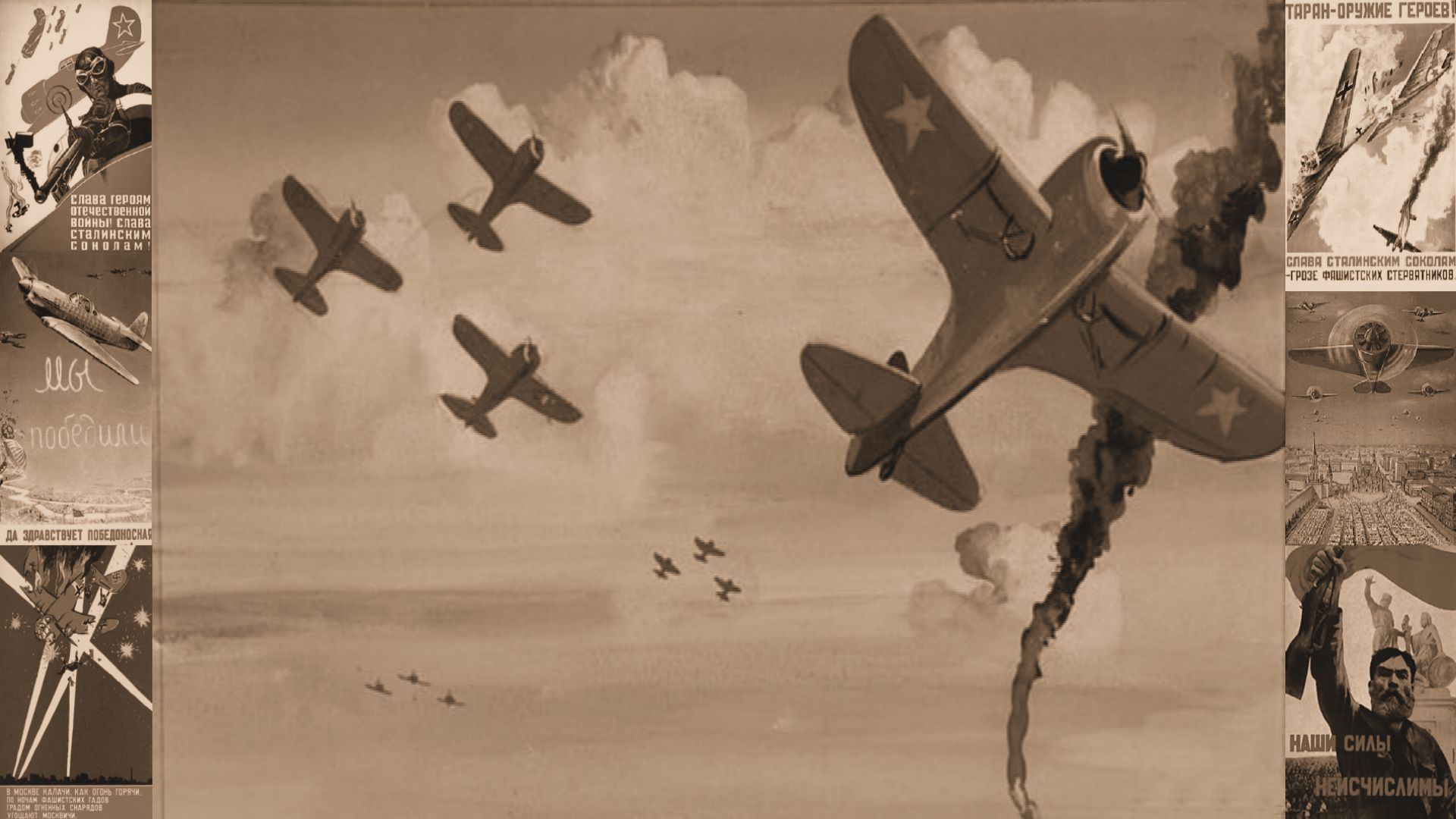The Lavochkin-Gorbunov-Gudkov LaGG-3 was a Soviet fighter aircraft of World War II. It was a refinement of the earlier LaGG-1, and was one of the most modern aircraft available to the Soviet Air Force at the time of Germany's invasion in 1941.
Development
Based on the original design of the LaGG-1 by S.A.Lavochkin, M.I.Gudkov and V.P.Gorbunov, it was found that the LaGG-1, was clearly underpowered and also lacked agility and range, which were the worst faults of the LaGG-1. These problems were addressed by the LaGG-3. It was designated LaGG-3 in serial production. Its airframe was almost completely made of timber, with crucial parts processed with Bakelite lacquer. This novel wood-laminate construction was more durable than regular timber, incombustible, and didn't rot, however, it tended to explode when hit by the 20mm guns of enemy fighters. It was, however, much heavier and pilots joked that rather than being an acronym of the designers' names (Lavochkin, Gorbunov, and Gudkov) "LaGG" stood for lakirovanny garantirovanny grob: ("(the) varnished guaranteed coffin"). The fuselage was the same as the MiG-3's. The LaGG-3 had outer wings with slats and balanced tail elevators, was lighter, and later also had a more powerful engine. It still was disliked intensely by its pilots. Production problems continued, some factories delivering unairworthy aircraft. Series production aircraft were up to 40km/h slower than those tested by the Voenno-Vozdushnye Sily(VVS) ('Military Air Force'). All fighters by S.A.Lavochkin were 250-300kg heavier than Yakovlev's, due to wooden construction and generally worser 'weight culture'. But they were way more sturdy and reliable. Fuel tanks were self-sealing, equipped with inert gas (exhaust) pumping system. Only 322 were ready on June 22,1941.
Back to Top
In Service
But the improvements were slight and without an alternative powerplant to the original Klimov M-105P, when the LaGG-3 was first committed to combat in July 1941, it was completely outclassed by the Messerschmitt Bf109E's. The first fights of the LAGG-3s faced German Bf109E's in June of 1941, demonstrating that they were quite capable opponents, if somewhat over-weighted for their power. During the early stages of German invasion the LaGG-3 was used extensively, and proved itself as a barely adequate fighter. Its resistance to combat damage and heavy guns were a large factor of its relative success. The LaGG-3's armament was considered formidable. It consisted of a large-calibre BK machine gun, which was installed between the "V" of the cylinders of the engine and two synchronized ShKAS machine guns. Consequently the weight of fire was 2.65 kg/s, making the LaGG superior to all serial Soviet fighters, as well as the Messerschmitt Bf109F. Later in 1941, the LaGG-3 appeared with new armament options, an internally balanced rudder, retractable ski landing gear for the winter, retractable tailwheel and wing pipes for drop tanks. The result was still not good enough. Even with the lighter airframe and supercharged engine, the LaGG-3 was underpowered though some Soviet pilots managed to reach the status of ace while flying the LaGG-3.
Withdrawl from Service
The major LaGG-3 construction plant in Gorky switched over to the La-5 in 1942 after having completed 3,583 LaGG-3. All further LaGG-3 development and production was done by factory 31 in Taganrog as the sole LaGG-3 manufacturer. Developments resulted in 21 major versions (66 total), all simply called LaGG-3. Overweight despite its wooden construction, at one stage 12 LaGG-3s were being completed daily and 6,528 had been built when factory 31 in Tbilisi switched to Yak-3 production in 1944.
Back to Top


